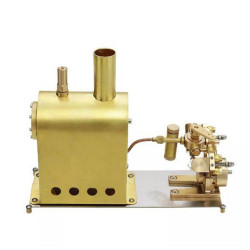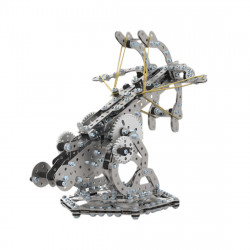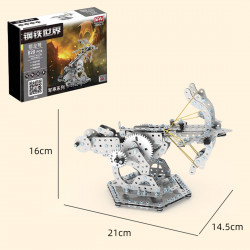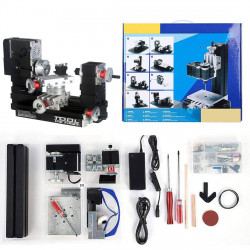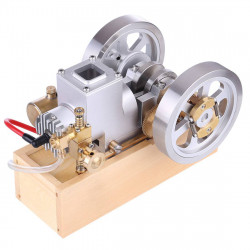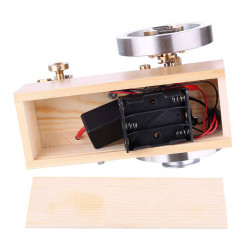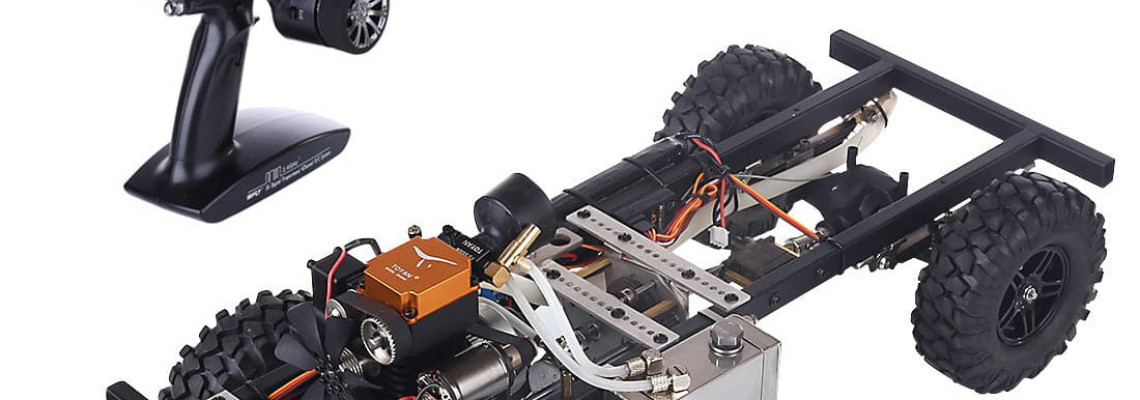
How to choose the oil for your RC shock absorbers?
What is a shock absorber?
Shock absorbers are a highly vital part of your RC car. Whether on the track or off-road, they have a tremendous influence on road holding. So, a shock absorber is usually made up of two parts:
- After suspension movement, a spring counteracts the vehicle's weight and restores the shock absorber to its initial position.
- An oil-braced hydraulic shock absorber that resembles a cylinder with a piston sliding inside.
We'll be talking about oil in this article. In fact, it significantly improves the car's handling by lowering internal mechanical friction in the shock absorber and softening the irregularities of the terrain through viscous friction inside the shock absorber. Thus, the oil's viscosity significantly impacts how the shock absorber is adjusted.
Which oil to choose for shock absorbers?
Modelers typically use silicone oil because it has excellent lubricating properties, doesn't corrode seals, and seldom changes grade with temperature changes. Mineral oil is another option.
The shock absorber is softer and faster (the piston's speed in the cylinder) when the oil is thinner; the shock absorber is more complex when the oil is thicker. The chassis runs the risk of touching the ground when the oil is too thin because the shock absorbers' journey is too broad. The car is more unsteady, and the tires have less grip when the oil is excessively thick. The optimal situation is when the vehicle swiftly stabilizes after a bump and maintains the wheels on the ground.
The type of vehicle and track condition also influence the choice of oil hardness. A Monster Truck, for instance, has a lot of ground clearance and is heavy. It must not turn too quickly to avoid turning around. In this instance, we advise applying hard oil to the front and back.
What is the oil viscosity indicator?
Oil viscosity is typically expressed in CST or CPS (1 CTS = 1 CPS)—the viscosity of the oil increases with the value. Every American manufacturer uses a different indicator that is based on the WT standard. A table of correspondence for American brands can be found here:
Matching Team Associated brand oils
Value CTS
10 108
15 154
20 208
25 286
30 373
35 454
40 525
50 707
60 725
70 960
80 1040
Correspondence of Losi brand oils
Value CTS
15 110
17.5 158
20 243
22.5 243
25 294
27.5 345
30 381
32.5 397
35 459
37.5 477
40 546
45 657
50 886
60 844
70 970
Which oil for which RC car?
When choosing the oil, the weight of the vehicle, the size of the shock absorber, and other considerations should all be taken into account. We're assuming that the following automobiles typically have the same settings right out of the box.
Which oil for a 4WD 1/10 track car?
We advise using an oil that is between 350 and 500 CST for a 1/10 size 4WD track car.
Track vehicles often use the same oil for both the front and rear shock absorbers, but the same guidelines that apply to other cars also apply when choosing an oil.
Which oil for a 1/10 2WD Buggy or Short Course?
We advise an oil between 300 and 350 CST for the front shock absorbers of a 2WD Buggy or 2WD Short Course in 1/10 size.
Our recommended oil range for the rear shock absorbers is 250 to 350 CST.
Which oil for a 1/10 4WD Buggy?
We advise using an oil between 350 and 450 CST for the front shock absorbers of a 1/10 scale 4WD buggy. Use a less viscous oil for slick tracks. When driving on a level surface, like concrete, consider increasing your speed to 500 CST.
The recommended oil for the rear shock absorbers is between 300 and 400 cst.
Which oil for a Short Course 4WD 1/10?
A 1/10 scale Short Course 4WD's front shock absorbers should use oil between 350 and 450 CST. Select 450 CST for adhesive surfaces (concrete, etc.) and 350 CST for slick slopes.
We advise using an oil that is between 350 and 400 CST for the rear shock absorbers.
Which oil for a 1/8 Buggy or Truggy 4WD?
We suggest an oil between 400 and 600 CST for the front shock absorbers of a 1/10 scale 4WD buggy or 4WD truggy.
We advise using an oil that is between 350 and 500 cst for the rear shock absorbers.
